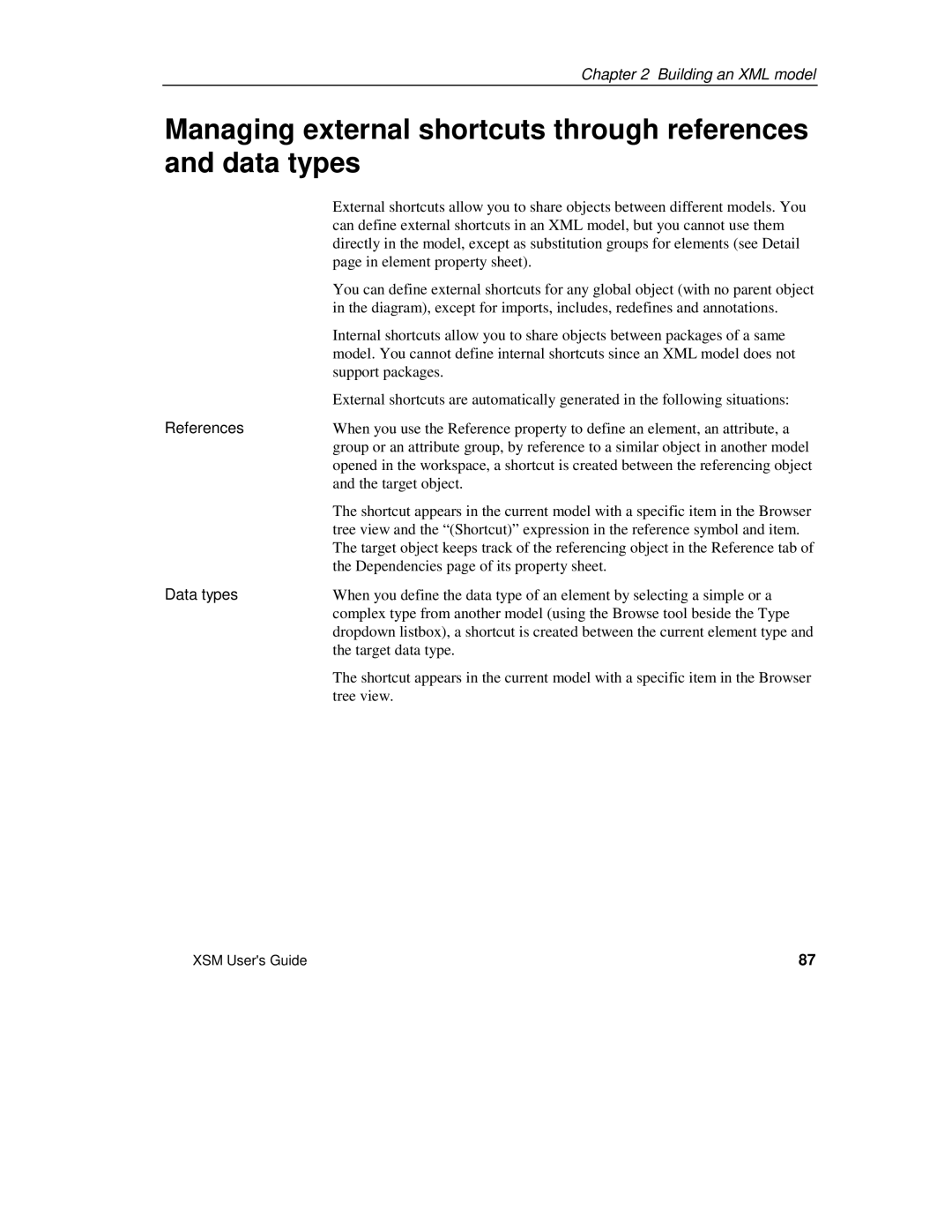Chapter 2 Building an XML model
Managing external shortcuts through references and data types
| External shortcuts allow you to share objects between different models. You |
| can define external shortcuts in an XML model, but you cannot use them |
| directly in the model, except as substitution groups for elements (see Detail |
| page in element property sheet). |
| You can define external shortcuts for any global object (with no parent object |
| in the diagram), except for imports, includes, redefines and annotations. |
| Internal shortcuts allow you to share objects between packages of a same |
| model. You cannot define internal shortcuts since an XML model does not |
| support packages. |
| External shortcuts are automatically generated in the following situations: |
References | When you use the Reference property to define an element, an attribute, a |
| group or an attribute group, by reference to a similar object in another model |
| opened in the workspace, a shortcut is created between the referencing object |
| and the target object. |
| The shortcut appears in the current model with a specific item in the Browser |
| tree view and the “(Shortcut)” expression in the reference symbol and item. |
| The target object keeps track of the referencing object in the Reference tab of |
| the Dependencies page of its property sheet. |
Data types | When you define the data type of an element by selecting a simple or a |
| complex type from another model (using the Browse tool beside the Type |
| dropdown listbox), a shortcut is created between the current element type and |
| the target data type. |
| The shortcut appears in the current model with a specific item in the Browser |
| tree view. |
XSM User's Guide | 87 |
